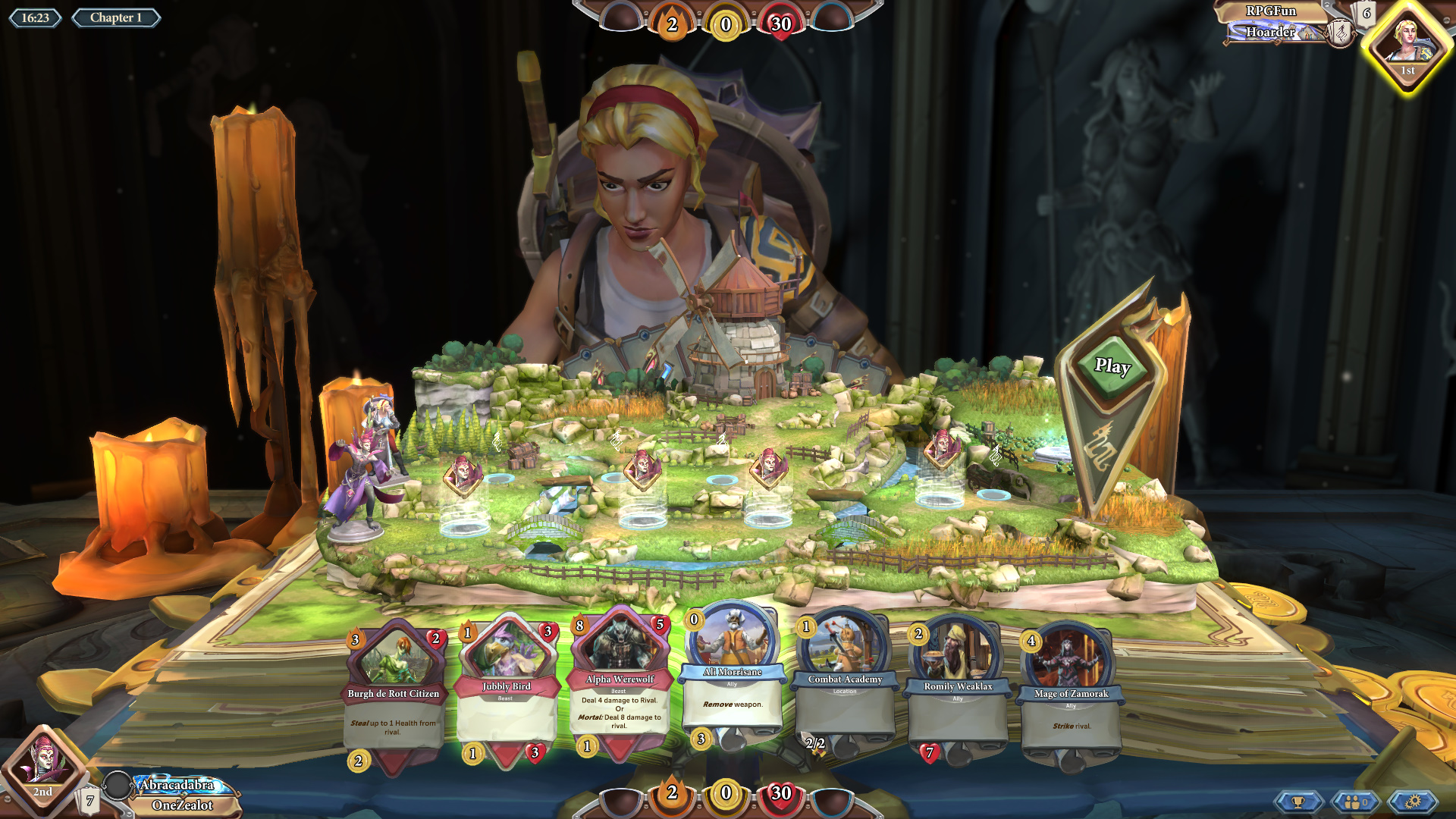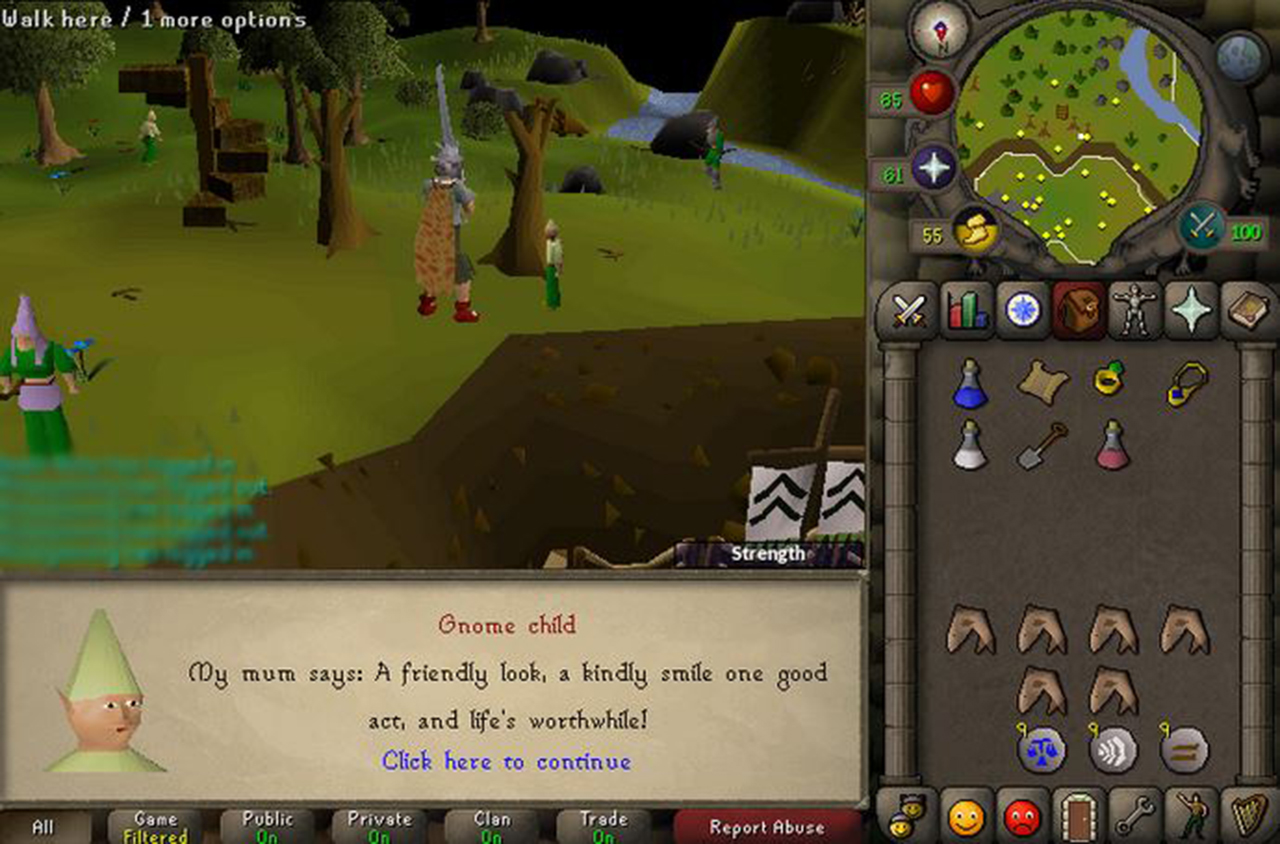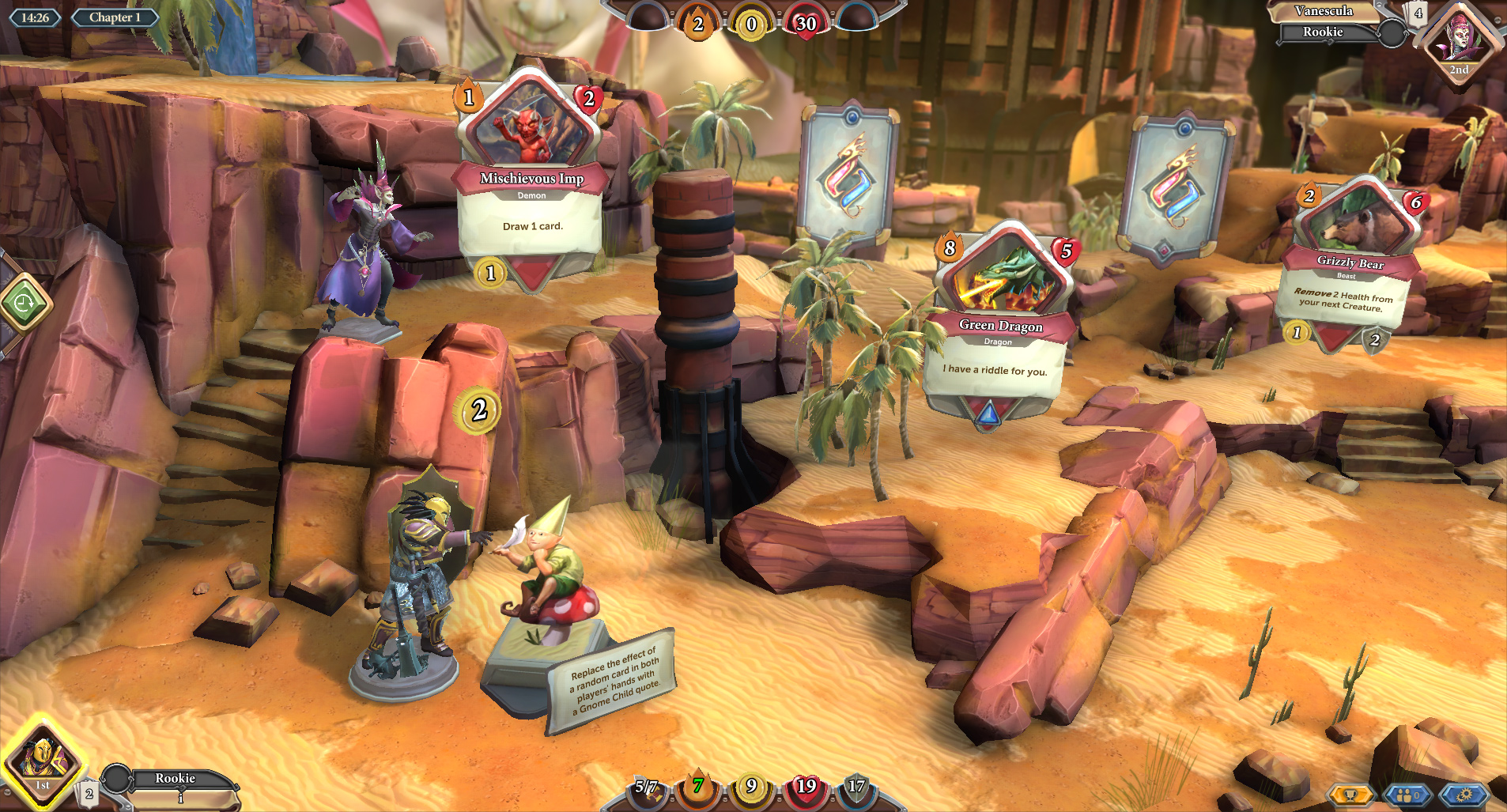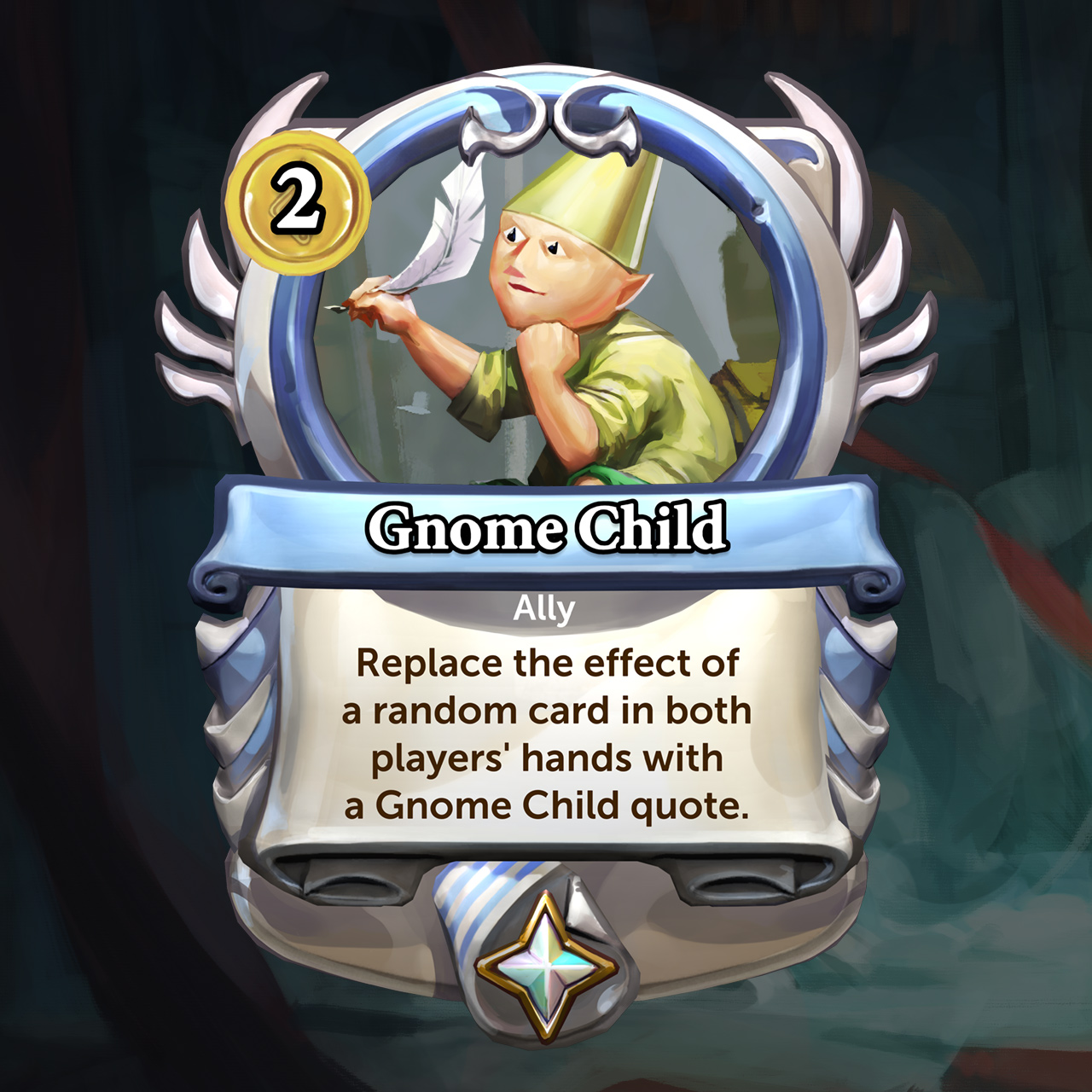How I turned Runescape’s dumbest meme into a troll card for its CCG
This is what happens when you let someone have free rein to create any card they want.

Digital card games in the era of Hearthstone need to be simple to pick up and play, but that doesn’t mean designing them is easy. I learned this when I sat down with the designers of Chronicle: Runescape Legends to help make a new card for consideration in the next update. Given free rein to design whatever I wanted, I of course immediately decided to turn Runescape's dumbest meme into a card that players could use to troll their opponents. In the process I learned that there’s a lot more to creating CCG content than slapping numbers on some evocative pictures of goblins—especially when the game in question is radically different from its rivals.
When I previewed Chronicle: Runescape Legends earlier this year, I wrote that it "remains one of the most original and exciting card games I've played in a long time." Largely due to the fact that, unlike Hearthstone, Chronicle is less about direct conflict and more about thinking four moves ahead, building a strategy while also sabotaging your opponent's plans.
Much of that has to do with how little Chronicle relies on the lineage of Magic: The Gathering. Instead of using mana, players use combinations of resources like gold, health, armor, and even the weapons they have equipped in order to use certain cards. Creatures don’t attack your opponent, but deal damage to your own hero in exchange for some kind of reward. Even concepts like 'taunt' or 'battlecry' aren’t present in Chronicle.

"The way we start out is we run at it from two different directions," lead designer James Sweatman explained. "We either start out with a graphic or character that we want to bring into the game, or we have a great idea for a mechanic and then ask: what in Runescape fits that well?" It didn’t take long for Sweatman to agree to my plan. Together, we would finally turn Runescape's ridiculous Gnome Child meme into a card befitting its status in the community.
If you're not familiar with the Gnome Child, he's a creepy-looking kid found in the Tree Gnome Stronghold in Runescape. He spouts an endless barrage of pseudo-philosophical one-liners with as much weight as the motivational posters found in every high school classroom. Because the internet is a strange place, players turned this inconsequential NPC into the most recognized Runescape character by creating a host of dumb memes poking fun at his dialogue.
Sweatman says they had been wanting to do something with Gnome Child for a while. Now that task was to be entrusted to my novice hand.

Don’t let your memes stay dreams
Without the templates established by Magic: The Gathering, figuring out what Gnome Child would actually do wasn't easy. Concepts like a 'two-drop'—a relatively weak card that costs two mana that players aim to play on their second turn—don't apply, so it was difficult to figure out where Gnome Child should fit in Chronicle's card pool. I decided to focus on capturing the essence of what Gnome Child is, and what he means to the community. With the memes first appearing in places like Reddit and 4Chan, I knew that he needed to be a card that was equal parts humorous and irritating.
Keep up to date with the most important stories and the best deals, as picked by the PC Gamer team.
"The first question is, from a character perspective, is whether the character should be a combat card—a creature—or a support card," Sweatman said. Gnome Child doesn't really pose much of a threat, so I decided to make him a support card. With all of Chronicle's support cards, there is always a cost in order to trigger their effect. Sometimes it can simply be gold, but it can also be less concrete like sacrificing a weapon or discarding a card. "Every card should have a drawback."
He spouts an endless barrage pseudo-philosophical one-liners with as much weight as the motivational posters found in every high school classroom.
That drawback would be dependent on what the card did, and I knew that Gnome Child needed something wacky and silly that griefs players. As we discussed what that might look like, I pitched the idea of Gnome Child filling your opponent's hand with dud cards that each displayed one of his randomized quotes, preventing that player from drawing any new cards until he played them.
"The interesting thing about hand manipulation," Sweatman replied, "is when you play those cards and you fill people's hands up, it's the most joyous experience. But on the flipside, it's not a fun experience at all [for the other player]. If you've been waiting to draw up to play a collection of cards, it can be immensely frustrating."

I liked the idea of working Gnome Child's quotes into his mechanic since they’re so crucial to his popularity, but other cards already dumped bad cards into the opponent's hand. I needed something more original. Sweatman suggested that Gnome Child could erase an ability on the enemy's next card and replace it with a random quote—essentially silencing that card. "I like the idea of getting to a card that you were so looking forward to with its epic effect and instead you just hear a Gnome Child quote," Sweatman said. "It's just so trollish."
At this point we had to start taking into account the cost and drawbacks of such an ability. Where Chronicle is still similar to most digital CCGs is that all of its cards can be boiled down to numeric values. When I spoke with Hex: Shards of Fate's AI designer earlier this year, I learned that all cards in any card game are given a hidden number that determines the value of that card. This has a ton of uses, like letting the AI calculate whether or not a certain play might improve its chances of winning. While each game might calculate that value differently, a well-balanced CCG will have a consistent system where strong effects are counteracted by higher costs. Being able to silence an opponent's card of your choosing was certainly a powerful effect requiring a high cost, so we decided to dial it back—and that's where Gnome Child took a weird turn.
I suggested that instead of letting the player choose which card effect to replace with a Gnome Child quote, it should be left to chance. That would significantly decrease the required cost of the card, but I wasn't satisfied with making Gnome Child simply cost gold either. Too boring. Instead, I wanted something that would really tap into his bizarre nature and potentially confuse both players. That's when I pitched the idea of making his effect a double-edged sword, replacing a card effect with a stupid quote not just in your opponent's hand, but your own as well.

This is what makes Gnome Child very interesting, as card effects can be both negative or positive depending on the card. For example, KGP Agent is a common support card which increases your base attack by one but also makes you discard a card. If I were to play Gnome Child, I could potentially erase that negative effect, allowing me to play KGP Agent safely. Likewise, I could accidentally remove a negative effect from my opponent's hand too. Either way, we had finally come across a card that had potential to be both irritating and bemusing. We had our concept.
Bringing Gnome Child to life
With the basic idea for Gnome Child hammered down, I sat down with senior concept artist David Barker to sketch out what the card would look like—which didn't turn out to be that easy either. Runescape has evolved significantly over the 15 years since it was first created by two brothers in their parents' house in Nottingham, and that’s apparent in the art style. Gnome Child is most notorious from Old School Runescape, where it's his low polygon face that made him famous. When Barker opens up a Google image search to get some ideas for what Gnome Child should look like, he scoffed: "It's rare that I have to draw something to look bad… It goes against every instinct."
As one person pitched a good idea, it quickly snowballed as others pushed it further.
I watched as Barker battled those instincts and tried to sketch Gnome Child's ugly mug. It wasn't easy capturing that low-poly squinty-eyed look, and Barker made several different attempts before he captured Gnome Child's expression. I wanted him to copy Rodin's The Thinker for Gnome Child's pose as a way to poke fun at his silly attempts to appear philosophical. Being a gnome, it was only fitting that he'd be sitting on a magic mushroom, and because he rewrites the effects on player's cards, he would also hold a magic quill.
It was amazing seeing a concept artist in action, and I was surprised at the speed at which Barker could work. Within minutes, he already had several rough concepts that each looked suitably like the Gnome Child. Our time together had run out, but Barker continued refining the ideas throughout the week and sent me a timelapse video showing his process which you can watch below.
Later, I was sent the final prototype of my Gnome Child card that Sweatman tells me will be considered for their next update. I have high hopes, but we’ll have to wait and see if it makes the cut. Either way, I've learned a lot about what it takes to design a balanced and fun card. Left to my own devices without Sweatman's guiding hand, I'm sure I would've designed something terribly unbalanced and not that much fun to play. There are so many different variables to account for that it’s intimidating coming to the process without any experience.

Perhaps what surprised me the most was how quickly we managed to nail down a rough template for Gnome Child. We spent almost as much time figuring out which card we wanted to attempt as we did actually designing it, which highlights the beauty of this collaborative design process. One person pitched a good idea, it quickly snowballed as others pushed it further, and there was a genuine feeling of excitement as we brainstormed all the possible roles the Gnome Child could fill. If the card does make it into Chronicle, that process will continue as the developers also let players pitch and vote on changes to cards—a core philosophy of Jagex's approach to game design.
Whatever happens to my beloved Gnome Child, I've learned a lot through the process of creating him. Turning established characters into cards and keeping their personality is challenging. Sure, if your character is a savage brute you can just slap some intimidating stats on the card and call it a day. But more nuanced characters require a great deal of thought to capturing what makes that character interesting. If it took a day's worth of effort to workshop just a single card, imagine the effort it takes to create hundreds.
With over 7 years of experience with in-depth feature reporting, Steven's mission is to chronicle the fascinating ways that games intersect our lives. Whether it's colossal in-game wars in an MMO, or long-haul truckers who turn to games to protect them from the loneliness of the open road, Steven tries to unearth PC gaming's greatest untold stories. His love of PC gaming started extremely early. Without money to spend, he spent an entire day watching the progress bar on a 25mb download of the Heroes of Might and Magic 2 demo that he then played for at least a hundred hours. It was a good demo.


